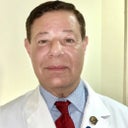I have been prescribing tretinoin in varying concentrations and formulations for treating very fine lines and crinkles, as well as for tone and texture problems for well over three decades. It remains the most tested of all topical agents for these problems and has a lot of good science behind it (unlike a lot of other touted ingredients, such as growth factors, stem-cell derived ingredients, vitamins, and all sorts of botanicals, anti-oxidants, etc.). That having been said, tretinoin is unlikely to significantly improve deeply etched-in wrinkles and folds, such as typically appear on the forehead, the sides of the eyes, and between the eyebrows from years of daily repetitive movement of the underlying muscles of facial expression governing those regions, and it certainly can have no effect on diminishing movement of those muscles. So, in general, the best overall approach is to use Botox (or Dysport or Xeomin) to reduce the underlying muscular overactivity that gives rise to the wrinkles and folds; to use fillers to plump up and straighten etched-in lines that already have formed; and to employ the regular use of tretinoin and sunscreens going forward as maintenance to reduce and mitigate the future development and redevelopment of the wrinkles and folds.
